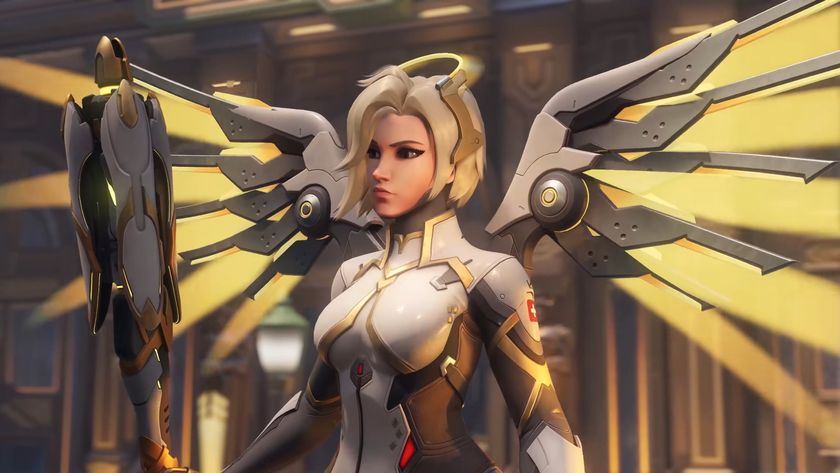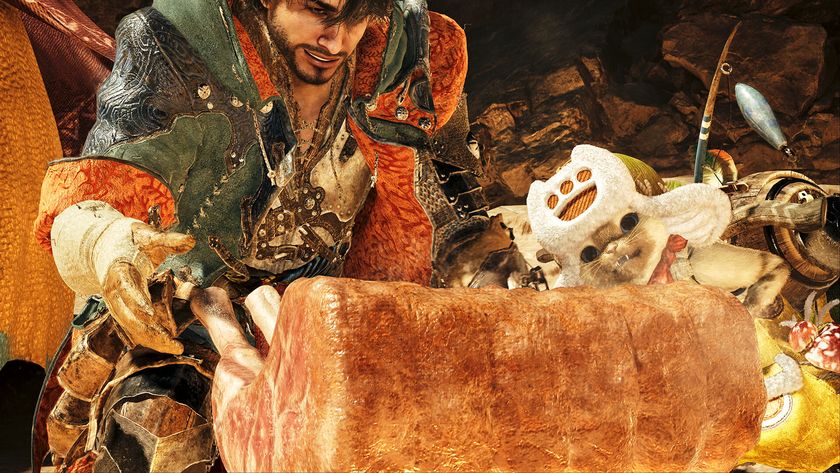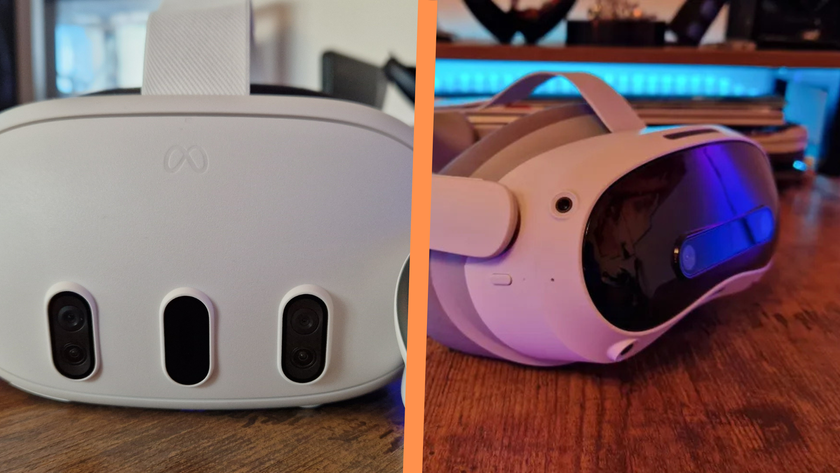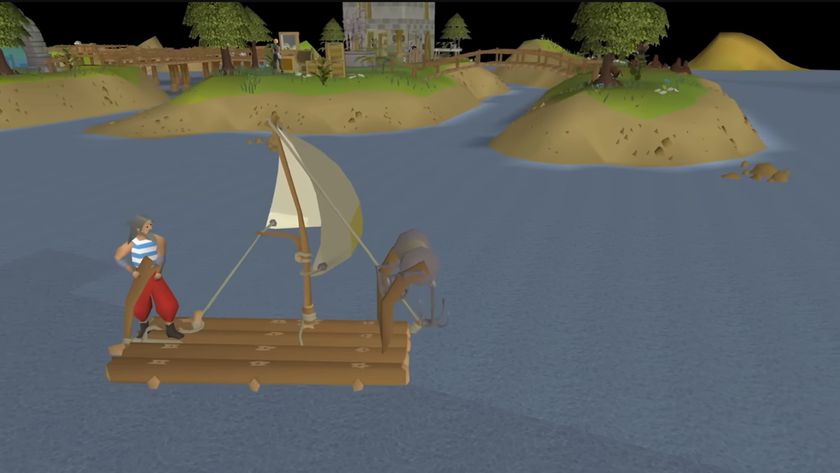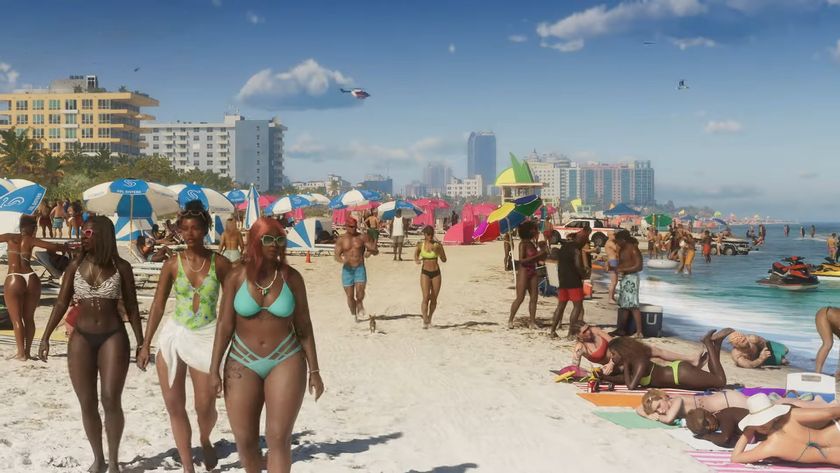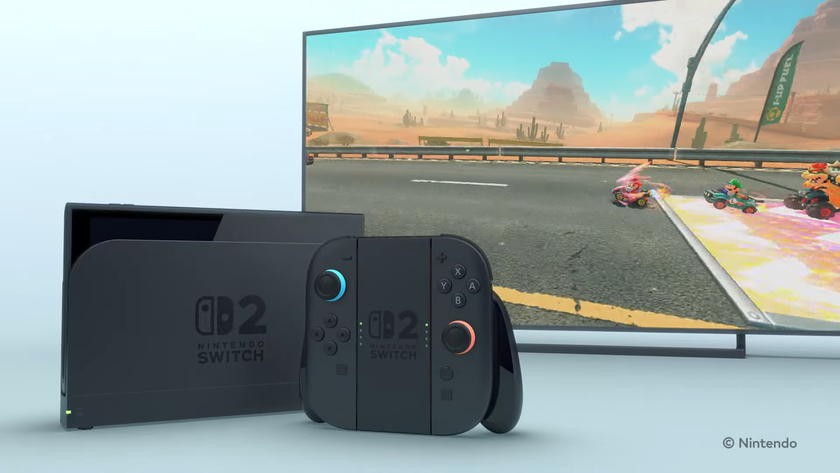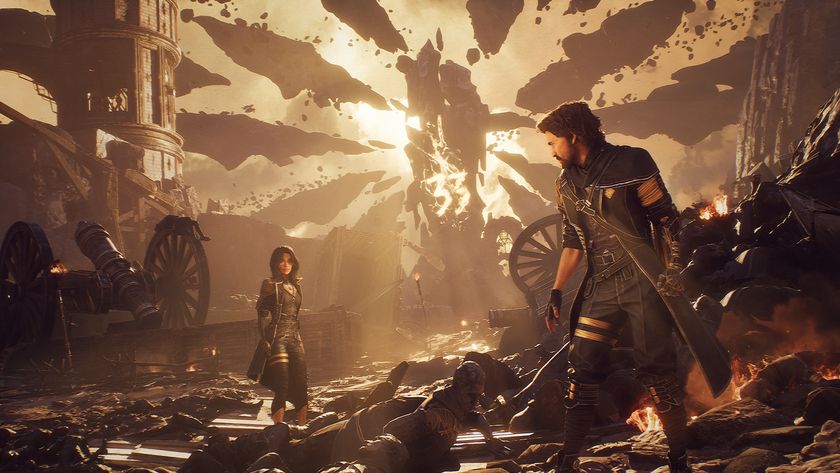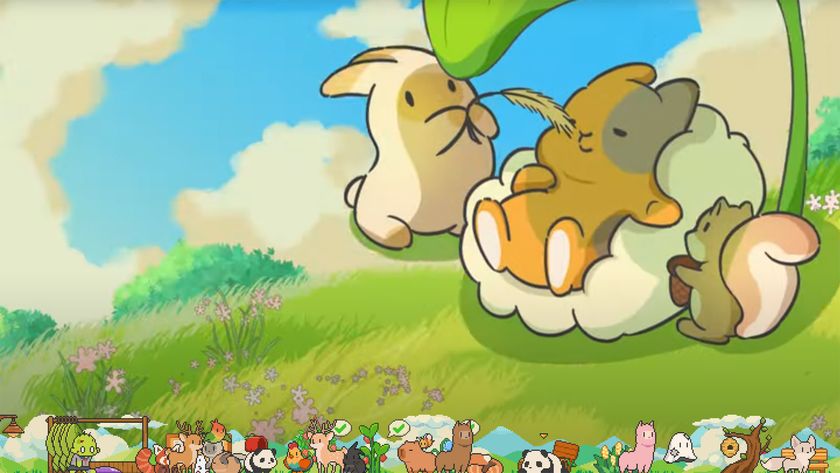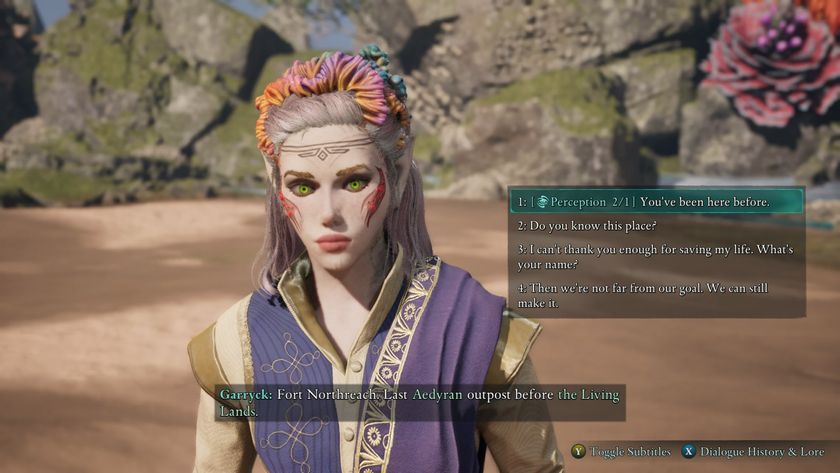Final Fantasy XIII-2 preview The first five hours and beyond
We start from the beginning and play all day to see how non-linear this sequel really is
With only one place unlocked so far though, we head to Bresha Ruins two years after Serah's current time, where a huge fal'Cie-like creature called Altas threatens to destroy an already precarious settlement built from the ruins of Bresha Lake.
With all the enemies swarming about Bresha Ruins, it's here we begin to investigate FFXIII-2's new battle features in more depth. While the Paradigm system is largely untouched, there are two big additions to battles – the Mog Clock and monster allies. When enemies come in range on the field, the Mog Clock starts counting down, and if you initiate battle while the clock is still green, you're awarded with a preemptive strike. Yellow means a regular battle, and if the enemy catches you while the clock is red you're hit with a surprise attack.
Monster collection is a little more complicated, but adds a whole new element to your Paradigm deck. When you defeat enemies, they'll sometimes drop a crystal that allows you to add that enemy to your roster of available monster allies. Each type of monster (Flan, Cactuar, Tonberry and so on) has a specific Paradigm role (think of this like a job or character class if you're unfamiliar with FFXIII), and you can equip the various monsters to different Paradigms, making it easy to swap them out on the fly during battle. Each monster has its own Feral Link special move too, and once a meter fills it allows you to perform a powerful attack, buff, or healing spell if you perform a Cinematic Action successfully. After playing with a small roster of beasts, we can already tell that we'll feel compelled to find and experiment with them all.
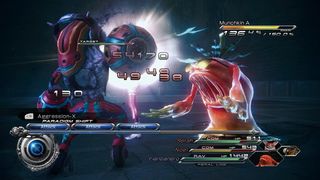
Above: Change monsters' appearances by equipping items. Yes, you can put sunglasses on your Flanbanero apparently
After meeting an aged Hope (he seems much more mature now), and forming an alliance with a new character named Alyssa (who's also affected by the distortions to the timeline), Serah and Noel decide to take on Atlas, but they're faced with a choice. Go in swinging and fight Atlas head on, or take their chances activating an ancient machine that could either weaken Atlas or make it more powerful. We decide to risk activating the machine and are rewarded with a significantly less powerful Atlas, who we make quick work of after a boss battle that includes several quick time events.
Soon we move on to the Sunleth Waterscape on Pulse, where we find a ragged Snow, 300 years in the future. He's obsessed with defeating a gigantic Flan that's slowly using its corrosive, gooey body to melt the crystal pillar that's holding Cocoon in place. The destruction of the pillar would obviously mean cataclysm for Pulse's residents, but Snow is also concerned that the Flan might also dissolve Lightning herself, who's part of the crystal. The Flan is too big for us to face even as a group, so we leave Snow to his self-destructive spiral and move on through another gate into the Historia Crux. You can revisit nodes within the Crux as many times as you want, and even reset individual nodes to replay the events, so there's no pressure to complete each area in the exact right way the first time you go through it.
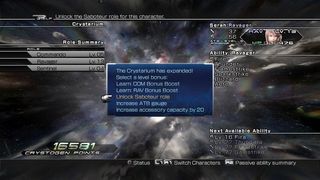
Above: Changes to the Crystarium make it more customizable than before
Sign up to the 12DOVE Newsletter
Weekly digests, tales from the communities you love, and more
Eventually, we wind up back in a place that should feel familiar – the Archylte Steppe. It looks different now though, in an unknown year where a small band of hunters are just trying to survive from one day to the next on what little game still roams the plains. Just as we're getting acquainted with these hunters (and their weather control system that affects which monsters appear on the field), our play time comes to an end.
Overall, the environments in XIII-2 feel markedly more fleshed out compared to XIII, with much more to explore. But other than a few obvious branching decisions in the Bresha Ruins, most notably the decision to either attack Atlas head-on or activate the machine first, the first five or so hours of Final Fantasy XIII-2 still felt fairly linear story-wise. At least, the story seemed to progress straightforwardly as we hurried to see as much as we possibly could during our preview time.
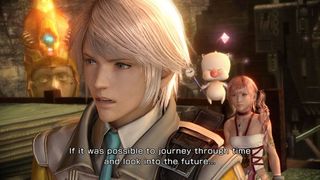
Talking to other people at the preview event though, it seems that the first five hours may not have been as straightforward as we thought. For example, the editor at the station next to us never saw Snow or the Sunleth Waterscape at all – instead, he continued from Bresha Ruins to help Hope, who's now a researcher at the Academy, on a completely different mission in a different area. So it seems that there are branching paths that might not be as obvious in a single playthrough.
So in a way, it was what we didn't see in our playtime that excites us most about FFXIII-2. When we think of non-linearity in games, often we think of being presented with explicit branching paths where the player must choose one thing or another, like choosing one of two characters to survive, or choosing good versus evil. In real life though, sometimes you don't even notice when you're making a divergent decision, and from our short time with Final Fantasy XIII-2 it looks like it might replicate that short of decision making, where you don't even know you've chosen one road over the other until you look back.
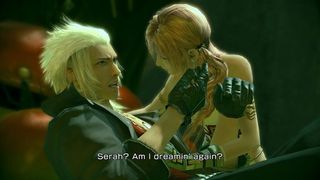
From what we've seen so far, we're impressed with how much of an overhaul the overall exploration structure and environmental design has received since FFXIII, especially given how soon XIII-2 was announced after XIII. We loved FFXIII, and it looks like XIII-2 is taking the best of XIII and changing it up for fans who prefer a more traditional RPG gameplay flow. We're eager to see what other surprises this sequel has in store, so look for more details as soon as we get them.
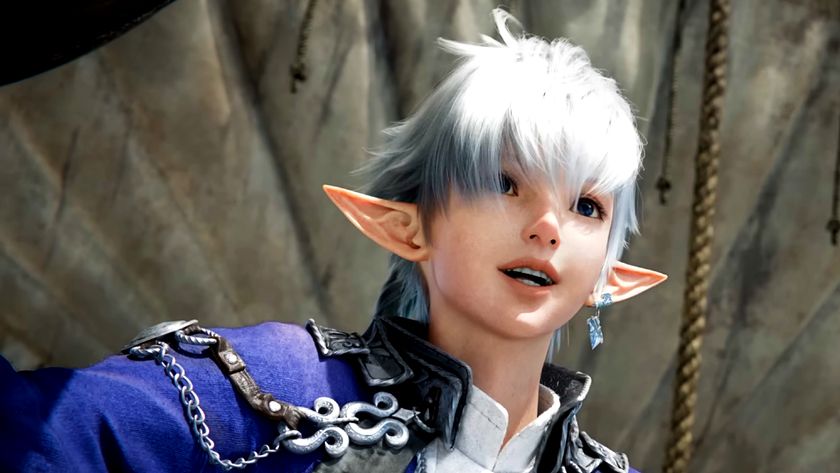
Final Fantasy 14's funniest speedrunning beef continues as runner who lost a world record to its original champ in just 1 day returns, beats record, is promptly dethroned again
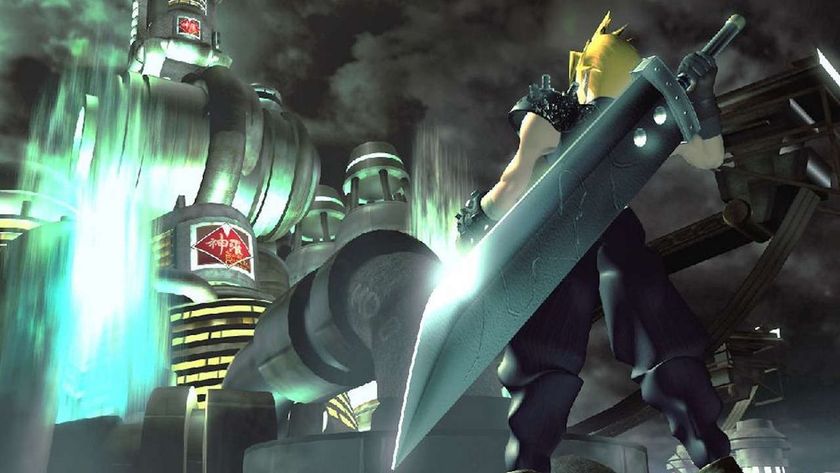
Sony finally managed to pry Final Fantasy 7 away from Nintendo thanks to a "schmoozer" of a former employee who hung out with Square Enix executives at his parties, according to one former PlayStation boss

